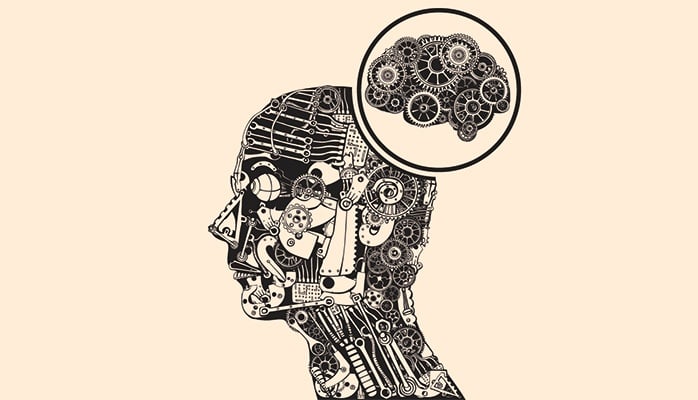Machine Learning - DEFINED
Feb 07, 2019 • Features • Artificial intelligence • Future of FIeld Service • Machine Learning • Emily Hackman
In a new series of articles from field service solution provider Astea, we tackle one of the burning questions being discussed amongst field service companies across the globe - what is Machine Learning and more importantly how can it be leveraged to improve service delivery?
Is Machine Learning a key topic for your organisation?!
There is a detailed white paper on this topic authored by Emily Hackman and Liron Marcus which is available to fieldservicenews.com subscribers within our premium content library...
Sponsored by:

Data usage note: By accessing this content you consent to the contact details submitted when you registered as a subscriber to fieldservicenews.com to be shared with the listed sponsor of this premium content who may contact you for legitimate business reasons to discuss the content of this content.
There's probably no singular definition that would be accepted universally, but there are certainly some basic concepts. To understand those concepts, think about what machine learning actually does. The machine finds patterns in the data and uses these patterns to predict the future.
For instance, suppose that we have a data-set of one million emails that were tagged as spam. We could find patterns in that data-set that characterize spam, for example emails with all caps or with exclamation points, especially when they’re in the subject line.
Then, we can use those patterns to predict whether or not an email is spam.
Is Machine Learning the Same as Artificial Intelligence (AI)?
These two terms are often used interchangeably, but technically they do not mean the same thing, nor are they used for the same purposes.
We will start by defining artificial intelligence (AI) since machine learning has developed as a result of breakthroughs in the AI field. AI means that machines can perform tasks in “intelligent” ways instead of just being programmed to do a single task over and over. Performing a task intelligently implies that machines can adapt to different situations. Machine learning is considered to be a branch of AI, and it means that machines can be built to learn on their own and automatically improve their decision making through experience, all without human supervision.(1)
If you’re still a little fuzzy on the differences, we will define both concepts more simply:
- Machine learning consists of technology applications that learn by analyzing a pattern of historical and recent data.
- Artificial intelligence consists of technology applications that provide automated reasoning and decision-making capabilities. (2)
Origins of Machine Learning and AI
If you are wondering when these concepts were created, you can look all the way back to the original logical machines--computers. The computer’s end goal was that it could eventually function like a human brain. As we learn more about how the human brain works, we build that knowledge into artificial intelligence. And when you couple our deeper understanding of how the brain works with the massive amounts of data that the internet provides, you understand why AI and machine learning have grown so much in the last few years.
According to AI expert Terrence Mills, “These two breakthroughs made it clear that instead of teaching machines to do things, a better goal was to design them to "think" for themselves and then allow them access to the mass of data available online so they could learn.” (1)
Why is Machine Learning so Popular These Days?
It’s all about data. Today, data is all around us. We are living in a data-driven world that’s only going to produce more and more data as time goes on. Humans and machines have become “data generators” that produce a tremendous amount of data every second. The amount of data created in the past few years is more than ever in the history of mankind and it is growing at a rapid pace.
The digital universe doubles in size every 2 years. By 2020, it will contain nearly as many digital bits as there are stars in the universe.
In fact, the IDC estimates that by the year 2020, the accumulated volume of data will increase to roughly 44 trillion GB.(3)
References::
- Robinson, Jim et a “Critical Capabilities for Field Service Management.” Gartner, 27 March 2018.
- Minkara, Omer. “Cognitive Customer Experience: The Future is Here.” Aberdeen Group, April 2017
- Turner, Vernon. “The Digital Universe of Opportunities: Rich Data and the Increasing Value of the Internet of Things.” EMC Digital Universe with Research & Analysis by IDC, April 2014.
Do you want to know more?!
There is a detailed white paper on this topic authored by Emily Hackman and Liron Marcus which is available to fieldservicenews.com subscribers within our premium content library...
Sponsored by:

Data usage note: By accessing this content you consent to the contact details submitted when you registered as a subscriber to fieldservicenews.com to be shared with the listed sponsor of this premium content who may contact you for legitimate business reasons to discuss the content of this content.





















 Field Service News is published by 1927 Media Ltd, an independent publisher whose sole focus is on the field service sector. As such our entire resources are focused on helping drive the field service sector forwards and aiming to best serve our industry through honest, incisive and innovative media coverage of the global field service sector.
Field Service News is published by 1927 Media Ltd, an independent publisher whose sole focus is on the field service sector. As such our entire resources are focused on helping drive the field service sector forwards and aiming to best serve our industry through honest, incisive and innovative media coverage of the global field service sector.
Leave a Reply